 |
|||||||||||
I served in the U.S. Air Force from 1973 to 1980 as a Missile Systems Analyst Specialist on the AGM-69A Short Range Attack Missile (SRAM). What that meant was that in my specialty, I was responsible for everything on this missile to the rear of the nuclear warhead (electronics, flight controls, and guidance). During my service I received the Senior Missileman badge, of which I am extremely proud, and a Munitions Master Team Chief Award. In addition, this is the time period when I first started to develop my photography skills. At the beginning of my time in the USAF, I was shooting with a Kodak Instamatic, and at my re-enlistment in 1976, I used my bonus money to buy my first 35mm SLR, a classic Nikon F, that I still own today. On this page I share with you some of my early photographs and memories of my time at Fairchild AFB, outside Spokane, Washington, where I was stationed following Tech School at Chanute AFB outside Rantoul, Illinois. My time at Fairchild spanned from July 1974 (in the midst of the World's Fair, Expo 74, in Spokane) until I left military service in November 1980. The SRAM first arrived at Fairchild in April 1974, not long before I arrived. This weapons system was finally decommissioned and the last SRAM left storage at Fairchild in 1991. |
||||||||||
 |
||||||||||
The SRAM insignia. Originally, the SRAM was to have a more distinctive name, such as the "Hound Dog" that preceded it. The name chosen was the "Road Runner." It never caught on and SRAM was ultimately used until the program was concluded. |
||||||||||
 |
 |
|||||||||
— Lackland Air Force Base, San Antonio, Texas. 9 October 1973 to 27 November 1973 — |
||
 |
||
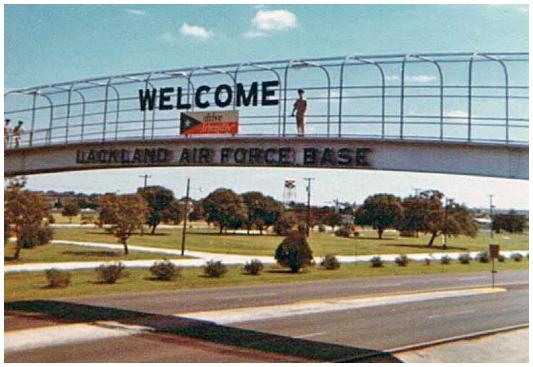 |
||||||
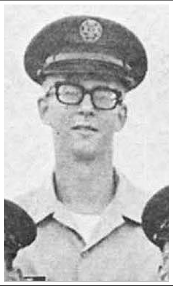 |
||||||
I enlisted in May 1973, but delayed leaving until October. Once in Basic Training, at Lackland AFB, the course lasted six weeks. After graduation, I spent an additional week in what was known as "Casual Squadron" while awaiting my final orders to Tech School at Chantute.
Above is the class photo of Flight 1347 of the 3701st Basic Military Training Squadron. Being one of the tallest, I am in the back row, 4th from the left. |
||||||
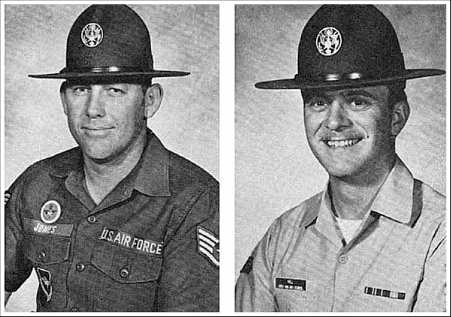 |
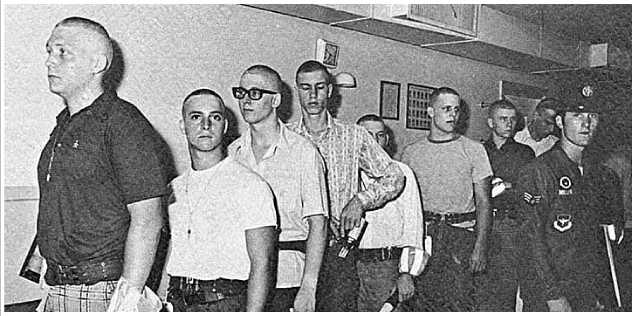 |
|||
Flight 1347's Training Instructors: Staff Sgt Jones and Sgt Hill. |
Standing in the barber shop, wearing my black-rim glasses, immediately after my first USAF haircut. |
|||
— Chanute Air Force Base, Rantoul, Illinois. 27 November 1973 to 17 June 1974 — |
||
 |
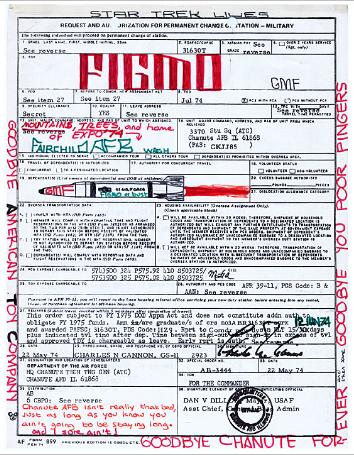 |
||||||
While in Air Training Command Tech School at Chanute AFB, several of us got together and rented an off-base trailer as our home. My first car was a 1961 Chevy Impala, then I got this 1970 Chevy Malibu, which was a repainted taxi. One of my roommates, Burley, is here helping me to keep it running in May 1974. |
|||||||
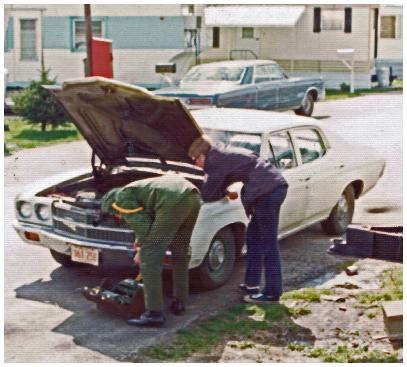 |
|||||||
In our dorm rooms on base, it was three people to a room. Each airman was allowed two posters on the wall to decorate their space, for a maximum of six posters. To expand my space, I lined the inside of my locker with photos and artwork. I even had a poster attached at the top so I could drop it down and cover the uniforms. |
|||||||
After six months of tech school at Chanute AFB, Illinois, I got my orders to report to my duty station at Fairchild AFB. I was extremely happy, as I was the first west coast assignment in six months. A standard practice on receiving orders was to decorate a copy and hang it on your door to rub the newbies (or Pingers) face in it.
I drew a SRAM missile and the nosecone reads "GMF" with the words "FIGMO or Bust" on the body.
FIGMO–Finally I Got My Orders! GMF–Gone Muther F*****! |
|||||||
— Fairchild Air Force Base, Spokane, Washington. 2 July 1974 to 20 November 1980 — |
||
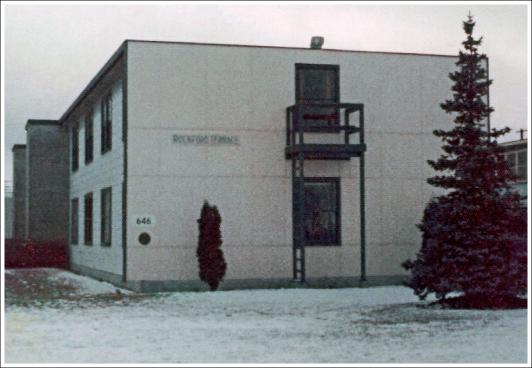 |
||||
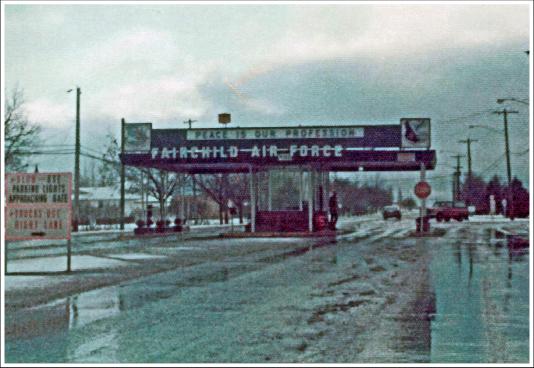 |
||||
My first winter at Fairchild was a very cold one. Here is the main gate to the Strategic Air Command base in January 1975. |
My original home, building 646, in January 1975. It was otherwise known as "Rockford Terrace." |
|||
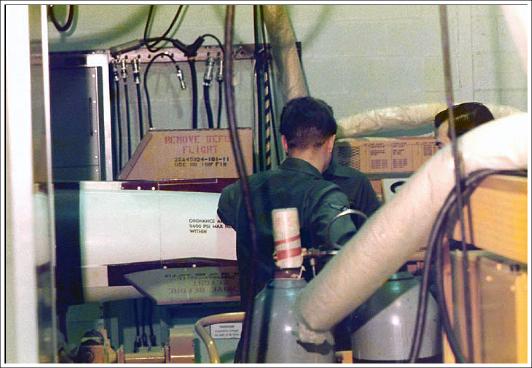 |
||||
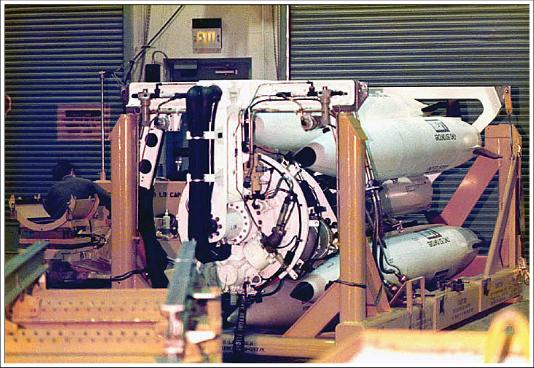 |
||||
Work on the SRAM was carried out in three areas: Missile Checkout (all missile systems except the warhead), Aircraft Checkout (interface with the B-52 and all associated equipment), and the Analysis Branch (flight crew debriefing, records, and history). From 1974 to 1977 I served in Analysis, and from 1977 to 1980 I served in Missile Checkout at the Integrated Maintenance Facility (IMF, aka, Impossible Missions Force!). Occasionally, I would also go on loan to the Aircraft Checkout branch. Most of the photos in this section are from Missile Checkout, since I did not have a good camera prior to that time. This shop was located in the Weapons Storage Area at Fairchild and was usually considered off limits for cameras. As a photographer, I obtained special permission from the Wing Commander to take photos in the WSA and IMF. |
|||||
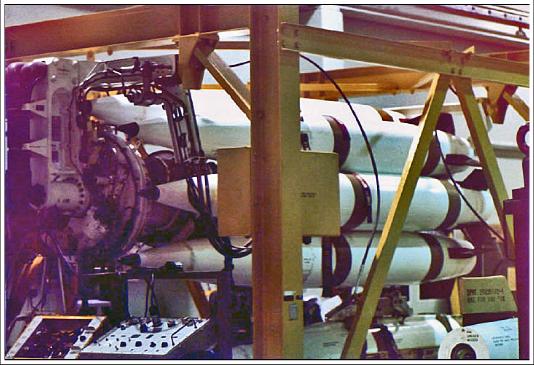 |
|||||
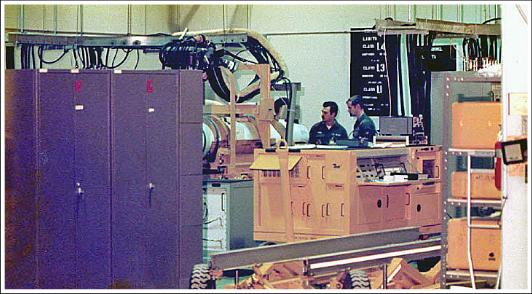 |
|||||
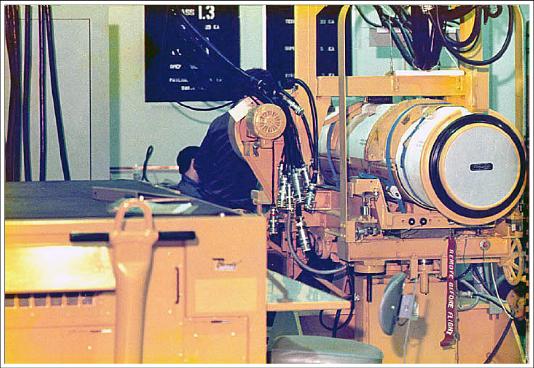 |
|||||
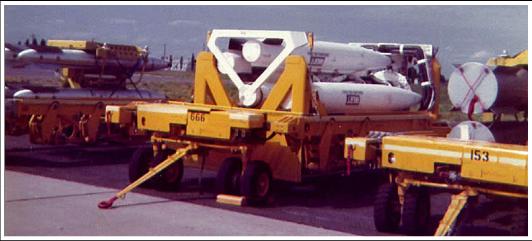 |
|||||
Three training racks and launchers ready to upload. L-R are the Mark 28s, the SRAM rotary launcher, and the B-61 gravity bombs. Taken out back of the IMF in July 1975. |
|||||
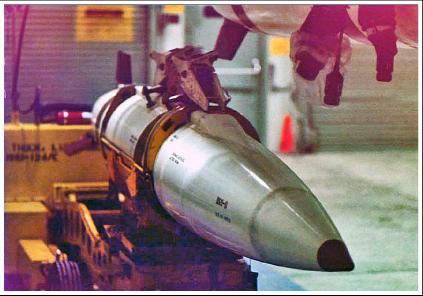 |
||||||||||||
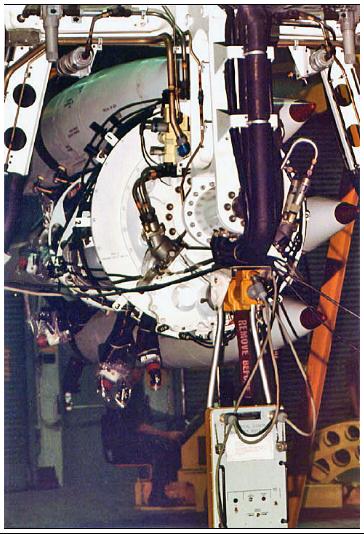 |
||||||||||||
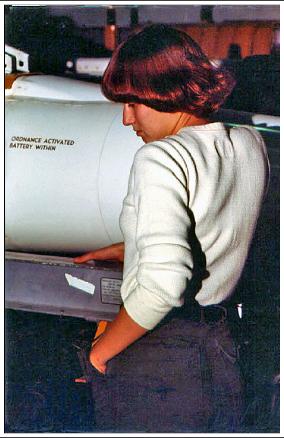 |
||||||||||||
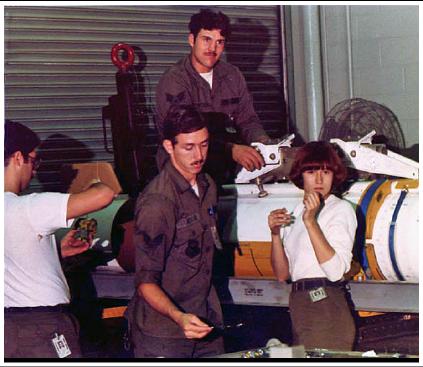 |
||||||||||||
The SRAM was used as a standoff attack weapon. In other words, the carrier aircraft (a B-52 or FB-111), would get within a hundred miles or so of a target and launch the missile. It would continue to its destination, detonating with a nuclear explosion as either a ground or air burst, depending on its mission. Fairchild AFB was a B-52 base, and the SRAM was carried on an internal rotary launcher that could hold up to eight missiles, although usually only six were actually loaded. We worked with the nuclear weapons specialists, who actually handled the warhead and installed it on the SRAM before delivery to the alert aircraft. When a missile was ready, the loaders would come out and install everything on the launcher and check it out. Once that was completed, a convoy was set up to move from the WSA to the Alert Facility. |
||||||||||||
It was not always a man's world. Although it was very unusual at this time. |
||||||||||||
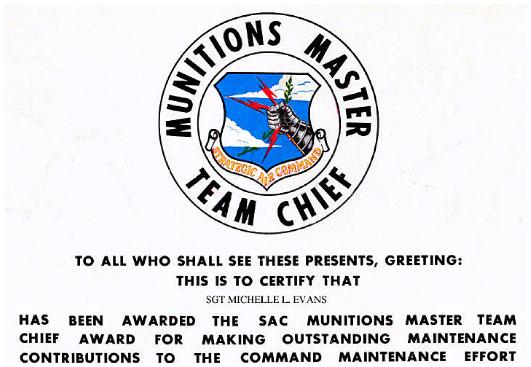 |
||||||||||||
Purdy worked in Ground Support Equipment checkout. This was the GSM-133, which was the primary equipment used to run the electronics of the missile. As Purdy points out here, they were often unreliable and frustrating to work on. With the warhead removed and electronics hooked up, you installed tape reels and ran the missile through its paces. Average time for a Level One Checkout of the SRAM was 4 to 6 hours. At the time I left the USAF, I held the record at 1 hour and 45 minutes, and did it solo. |
||||||||||||
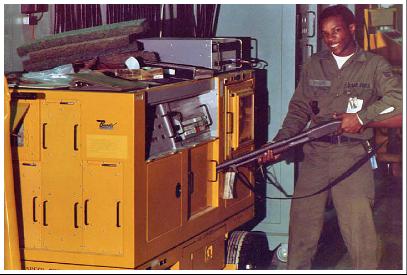 |
||||||||||||
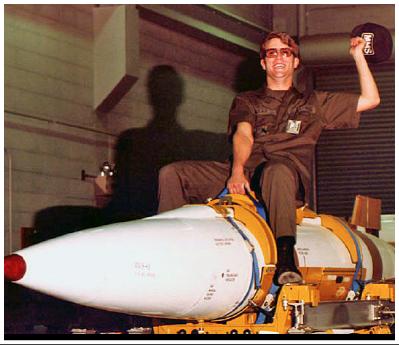 |
 |
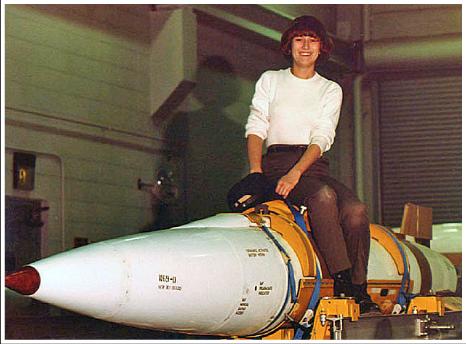 |
||||
It was often a tough job, but that also meant it was good to let off steam once in a while. I always had a fixation for Dr. Strangelove, and it apparently wore off on many of my friends. One of my good friends, Jeff Geer, took a ride, as did our female worker, whose name is lost to history (I'm in the middle). |
||
 |
 |
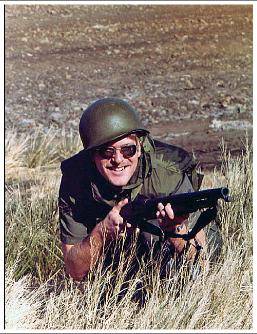 |
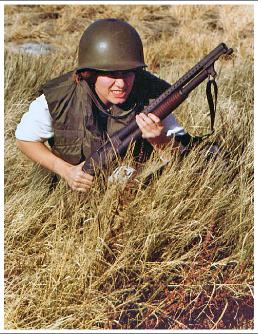 |
|||||||
The WSA was not connected physically with the rest of the base, so a secure convoy had to be organized anytime weapons were moved from the WSA to the main base or the Alert Facility. Everyone got tagged for convoy duty once in a while, which consisted of having to get dressed in full battle gear, flack jacket, and weapons. Luckily Fairchild was never attacked while we fierce warriors were on duty! |
||||||||||
Me lounging on a missile launcher full of nukes. |
The Coneheads were popular at the time. |
|||||||||
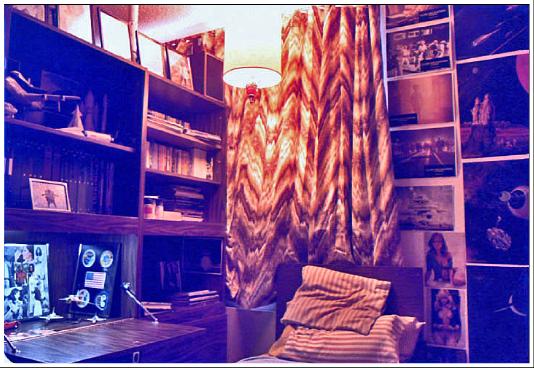 |
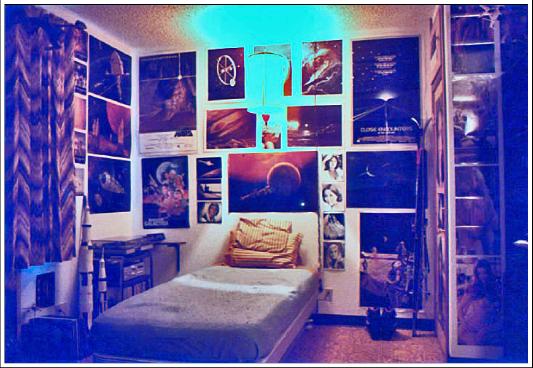 |
|||
To give you a taste of dorm living for an NCO (E-4, Sgt), here are a few shots of my room in Barracks 641, 2nd floor, probably taken around summer 1978. Various posters, models, and books can be seen, many of which I still own after all these years (including my Planet of the Apes trash can in the lower left photo near the door!). |
||
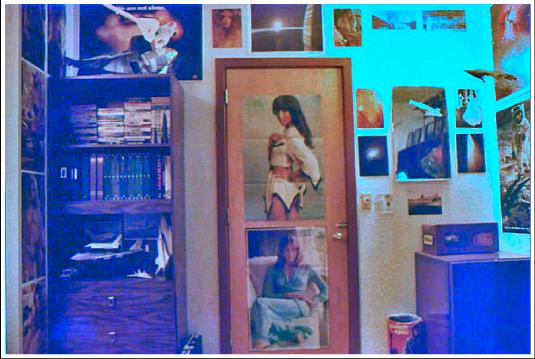 |
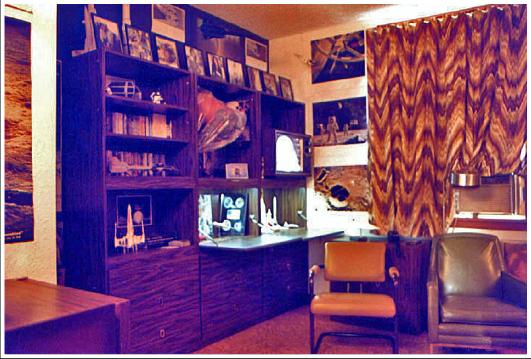 |
|||
 |
|||||||||
A B-52D was used to train maintenance crews. This model actually had a tail gunner sitting at the back of the aircraft during missions (later models were controlled from the front cockpit). In the event of an emergency, four squibs fired and the guns blew off so the gunner could parachute to safety. On the training bird, these squibs were supposedly removed. Someone once pulled the ejection handle and found out otherwise! These photos were taken on my 20th birthday, 5 Aug. 1975. |
|||||||||
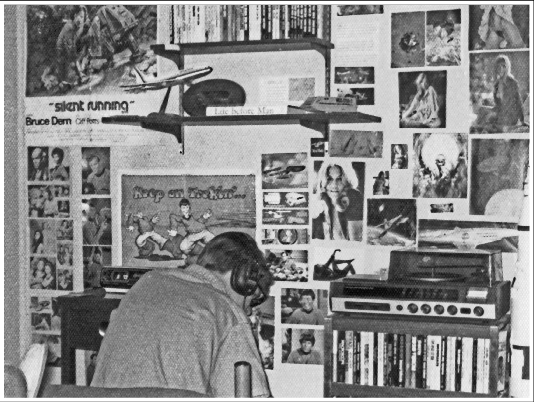 |
|||||||||
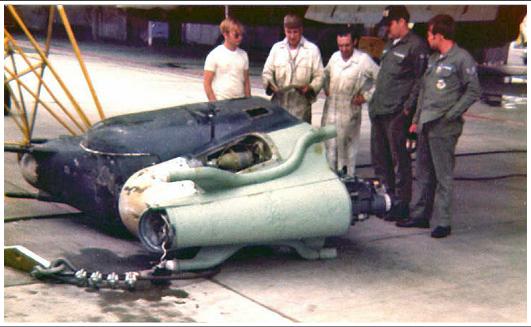 |
|||||||||
Back in Rockford Terrace (building 646) this was my room on the first floor in November 1974, just four months after I arrived. Here I'm checking out some music through my giant heaphones. |
|||||||||
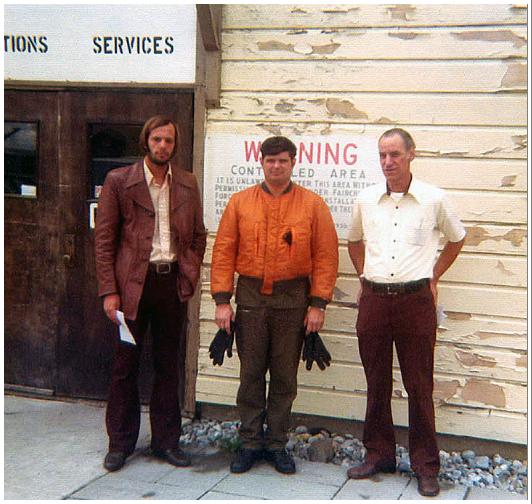 |
|||||||||
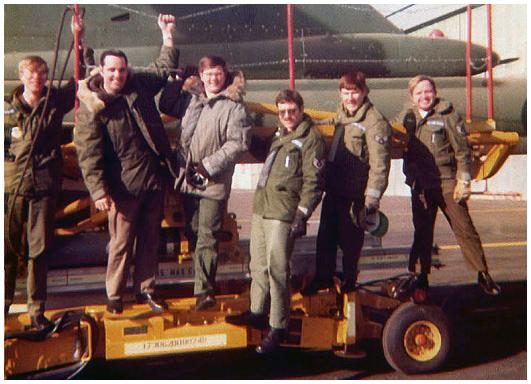 |
|||||||||
This photo was taken on 10 Mar. 1976, just before the one on the main History Photos page with me doing the Dr. Strangelove pose out on the nose. This was our group in charge of moving the last Hound Dog to its final destination. L-R are myself, Tom Prahl (my first boss at Fairchild), Tim Mattson, Milt Newdig, Marvin Carson, and Ray Barnett. The happy group in this photo would not all end up that way. Tom committed suicide after murdering his girlfriend, whom he found with another man, about a year after I left Spokane. Marvin was my best friend for many years until he passed away from AIDS in 1994. Marvin had the dubious distinction of being born the exact same day McDonalds was founded. We celebrated every birthday at a McDonalds! |
|||||||||
I arrived at Fairchild as the SRAMs were still being readied for operation. We had Boeing Tech Reps present for this transition. L-R are Steve Fitzer (Boeing), my boss Tech Sgt Fred Chapman, and Ed Jones (Boeing). |
|||||||||
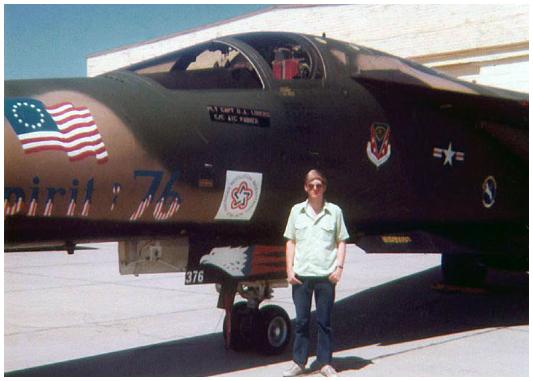 |
 |
|||
I took a helicopter flight over the countryside with the Rescue Squadron one day. This was the view of the Alert Facility as we came back in prior to landing. Three B-52 Stratofortresses and one KC-135 Stratotanker can be seen. 25 May 1976. |
||||
Posing in front of an F-111 painted in Bicentennial colors the day before the Fairchild Open House on 15 May 1976. |
||||
 |
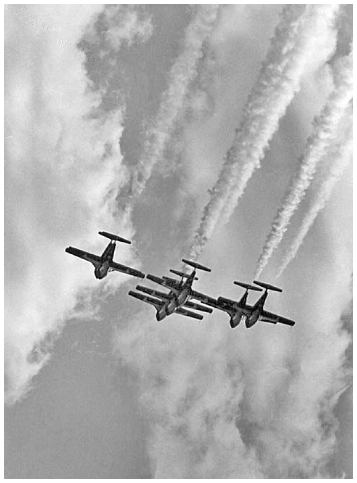 |
|||
I took a shot at acting at one time, long before my involvement with the play Darkside. Here is the cast of the Fairchild First Step Theater after the last performance of our first plays on 6 February 1976. We performed an early Woody Allen play "Don't Drink the Water," Edward Albee's first play "The Zoo Story, "and from an unrecalled author "Take a Letter." We got rave reviews but I was smart enough to keep my day job!
L-R top row: myself (in hat), Joe, Dennis, George, Steve. Bottom row: Linda, Denise, and Toni. |
||||
One of my first photos that received wide spread distribution was this one of the Snowbirds Aerial Demonstration Team flying the CT-114 Tutor at the May 1979 Fairchild Open House. |
||||
 |
||||||||||